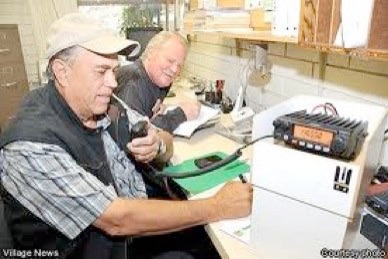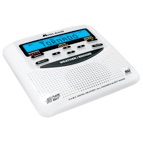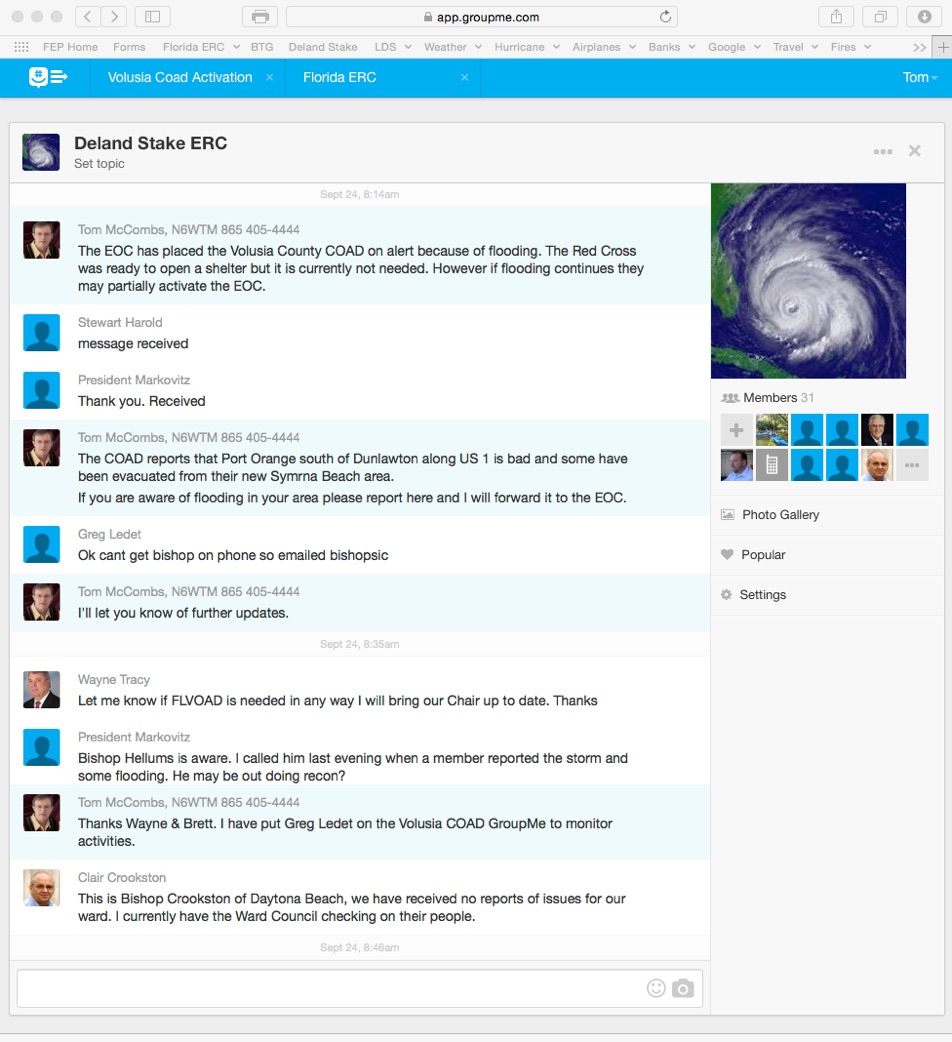
Emergency Communications
Local Frequencies: (examples)
-
1.EOC Repeater frequencies
147.240 +123
146.865 no tone
-
2.Local Traffic Net
146.200 -100
-
3.Local Stake nets (Sunday 7:30)
146.865 no tone
147.460 simplex
2. Radio Communications
When all else fails, radio communications may be the only way to communicate during an emergency/disaster. Amateur radio is the backbone of the church ERC system. An effective radio communication system can provide coordination and information for Stake and Ward leaders.
Weather Radio
Every family & church leader should have a weather alert radio. A radio with SAME
technology allows you to program the radio to only alert you of storms
in your local area eliminating false alarms.
FRS/GMRS (Family Radio Service Radios)
These radios may be helpful in coordinating local emergency communications
(range about 1/2 - 1 mile).
Amateur Radio
This section is provided to assist those interested in getting a Amateur Radio License.
There are three Amateur Radio Licenses available:
-
•Technician - primarily used for UHF and VHF (line of site) communications. The technician test consists of 35 questions with 26 correct answers.
-
•General - HF (High Frequency) long distance (around the world) communications. The general test consists of 35 questions with 26 correct answers.
-
•Extra - Additional HF privileges. The extra tests consist of 50 questions.
Testing is available in your local area as well as excellent resources to assist in training.
Below are some aids that may be helpful:
-
•http://www.arrl.org/ - The American Radio Relay League is the national association for Amateur Radio in the USA.
-
•Technician Question Pool with only the right answers 2018-2022-Tech Question Pool.pdf
-
• - Technician Question Pool Helps Technician 2018-2022 Syllabus.pdf
-
•General Question Pool with only the right answers 2015-General Question Pool.pdf.
- General Question Pool Helps General 2015-2019 Syllabus.pdf
-
•Practice test site: http://www.qrz.com/ht/
-
•Ipad/Iphone, android phone and other training apps are also available
Instructional Videos (they are dated but the information is still good - used by permissions from the ARRL)
Technician Instructional PowerPoint TechnicianClass2014.ppt
-
•PowerPointViewer.exe (If you don’t have powerpoint)
For additional information contact:
Tom McCombs (tommccombs@gmail.com)




During most emergencies, cell phones and social media (email, twitter, group texting) may be available to coordinate activities and provide vital information. Emergency communication systems based on phones and the internet should be developed and practiced to train local leaders in effective communications during disasters/emergencies.
When normal communications are down (phone lines & internet), other systems such radios should be deployed.
1. Cell Phones and Social Media
Develop communication systems for individual and group communications like phone & email calling trees, group texting, mass communicating through twitter or other media as it is developed. Group email is available through the church directory. Use whatever works to get the message through. Below is an example of a group texting system called GroupMe.
GroupMe (www.groupme.com)
GroupMe is a free application that works will all cell phones, tablets and computers. It allows group texting, pictures/video and map location. Several LDS locations have setup weekly nets using GM (GroupMe) to train leaders in emergency communications. Below is an example of GM used during flooding in Florida. Those participating used their smart phone, tablet or computer. Pictures and maps could have been sent.

